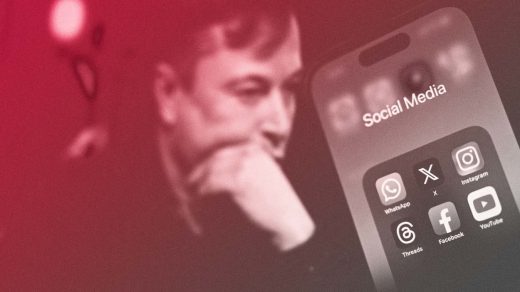Elon Musk’s latest change to X won’t just be annoying—it will also be a disinformation nightmare
X, the platform formerly known as Twitter, is in the early stages of changing how it displays links to external websites. The goal is to remove all headlines and subheadings (the short description that appears below the headline) from tweets.
The change, first reported by Fortune and later confirmed by Musk himself on X, is apparently designed to “improve esthetics.” Fortune reported that Musk wants to reduce the height of individual tweets so as to display more content on a user’s feed at any one time. The change is also designed to tackle what Musk sees as the problem of news publishers using clickbait headlines in order to lure users onto their websites to read their stories.
We are already seeing the first step toward this new design of X, in the way that the top-level domain (for instance, fastcompany.com or youtube.com) is shown on the link card above the image. And experts warn that could have deleterious effects on media literacy—and launch a wave of cybercrime.
“What it does smack of is removing a means of driving traffic to news sites,” says Alan Woodward, professor of cybersecurity at the University of Surrey, U.K. Woodward also worries that it could be the first step toward censorship of sites that Musk deems unpalatable—bearing in mind that the platform once marked links to rival sites like Substack as unsafe without evidence.
Equally concerning for Woodward is the potential for mischief that removing contextual information about a link could cause for ordinary users of X. “I think it could be misused by some to spread disinformation,” he says. It’s not unfeasible, in a world where people continue to be rickrolled on X, that misrepresentation of links will occur when any important contextual information is removed. It’s possible internet trolls or cybercriminals could try to pass off a large image of an innocent or benevolent subject as the featured image of a link that is in fact nefarious.
“By relying on just images, there would be no context for the images and would make it very easy for people to be duped into wrongly thinking what an article may be about,” says Steven Buckley, a lecturer in media and communications, specializing in U.S. politics and social media at City, University of London. “When there is less context provided, the impact fake news can have increases.”
Beyond the real risks outlined above, Buckley is also wary that the proposed change would even force news organizations to really rethink their editorial strategies. “Even if news organizations were to bow to Musk’s new way of thinking and solely rely on images to get people to click their news links, then news organizations would simply start creating bombastic, clickbait-y images,” he says. “We’ve all seen thumbnails on YouTube that look like a chaotic mess that nonetheless compel you to click them to see what the video is about. These chaotic images could soon flood X’s timeline if Musk has his way.”
(15)



